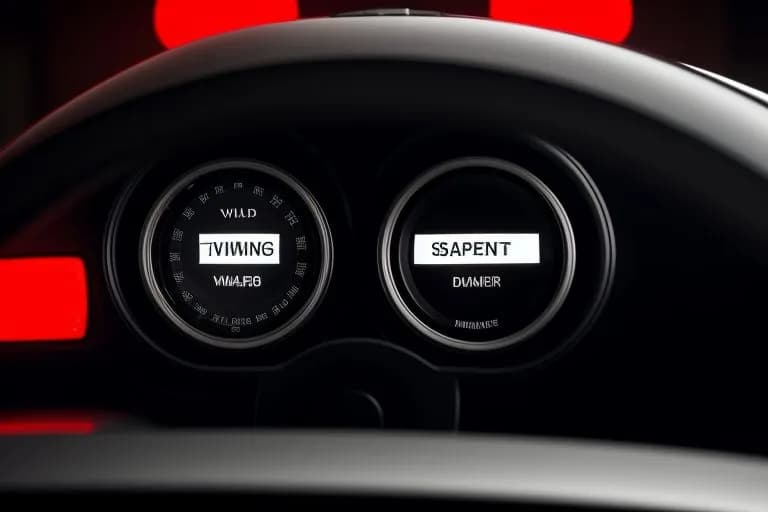Find My Tire Size by VIN Number: A Complete Guide
Learn how to find your tire size using your VIN number. Get tire size information quickly and ensure your vehicle has the correct tires for optimal performance and safety.
Find My Tire Size by VIN Number: Your Quick Guide
Do you need new tires? Knowing your tire size is key. The easiest way to find your tire size is using your VIN number. This guide shows you exactly how to find my tire size by VIN number. We'll walk you through the steps. You'll learn where to find your VIN, how to decode it, and what tire size you need. Let’s get started!
Why Should I Know My Tire Size?
Knowing your tire size is very important. It affects your vehicle's safety and performance. Using the wrong size tires can cause issues. This includes poor handling, reduced fuel efficiency, and even damage to your vehicle. Getting the right tire size ensures your vehicle runs smoothly and safely. You can keep your car in top shape by using the right tires.
Decoding Your VIN: Where to Find It
Your VIN (Vehicle Identification Number) is a unique code for your car. It's like your car's fingerprint. You can find it in a few places:
- Dashboard: Look at the driver's side dashboard. It's usually visible through the windshield.
- Driver's Side Door Jamb: Open the driver's door. The VIN is often on a sticker.
- Vehicle Registration: Your car's registration document has the VIN.
- Insurance Card: Your insurance card also lists the VIN.
Once you've found your VIN, you can use it to find your tire size. You can also use it to look up other vehicle information. Use our VIN decoder for a detailed vehicle history report.
Understanding the VIN and Tire Size
The VIN doesn't directly tell you the tire size. But, it gives you info about your car. This includes its make, model, and year. This helps you find the correct tire size. You’ll use the VIN to look up your car’s specifications. You can then find the tire size information.
How to Decode Your VIN to Find Tire Size
Here's how you can find your tire size using your VIN number:
- Locate Your VIN: Find the 17-character VIN on your vehicle.
- Use a VIN Decoder: Use a VIN decoder tool. Many free ones are available online, including our VIN decoder.
- Enter the VIN: Type your VIN into the decoder.
- Review the Results: The decoder will give you vehicle details, including make, model, and year.
- Check Tire Size Specifications: You can often find the tire size in the vehicle specifications provided by the VIN decoder. If not, go to step 6.
- Consult Other Resources: If the VIN decoder doesn't provide the tire size, check your owner's manual or look for a tire placard.
Using Online Resources to Find Your Tire Size
Several online resources can help you find your tire size by VIN number. These tools decode the VIN to give you vehicle specs. They often include the recommended tire size. Here are some useful resources:
- ChassisVIN.com: Use our VIN decoder for detailed vehicle information, including potential tire sizes.
- Goodyear: Goodyear provides a tire lookup tool where you can enter your vehicle's details to find compatible tires. (https://www.goodyear.com/en_US/vehicles)
- Mopar: Mopar offers a tool to find tires by vehicle details or VIN. (https://www.mopar.com/en-us/service-maintenance/tire-results.html)
Interpreting the Tire Size Code
Once you find your tire size, it's important to understand the code. The tire size code looks something like this: P215/60R16 95H. Here’s what the code means:
- P: This means the tire is for passenger vehicles.
- 215: This is the tire's width in millimeters.
- 60: This is the aspect ratio (height to width).
- R: This means the tire has a radial construction.
- 16: This is the wheel diameter in inches.
- 95: This is the load index (how much weight the tire can carry).
- H: This is the speed rating (the maximum speed the tire can handle).
Knowing how to read the code helps you choose the correct tires.
Where Else Can I Find My Tire Size?
Besides using your VIN, there are other places to find your tire size. These can be helpful if you don't have your VIN handy:
- Owner's Manual: Your car's owner's manual has the recommended tire size.
- Tire Placard: This sticker is on the driver's side door jamb or glove compartment. It shows the recommended tire size and pressure.
- Existing Tires: Look at the sidewall of your current tires. The tire size code is printed there.
Tips for Choosing the Right Tires
Selecting the right tires involves more than just the size. Here are some tips:
- Consider Your Driving Needs: Think about the type of driving you do. Do you drive mostly in the city or on the highway? Do you face snowy or wet conditions?
- Check Tire Ratings: Pay attention to the tire's ratings. Look at the speed rating, load index, and treadwear.
- Read Reviews: See what other drivers say about different tires.
- Consult a Professional: Get advice from a tire shop. They can help you choose the best tires for your vehicle and driving habits.
Tire Size by VIN: Common Issues and Solutions
Sometimes, you might run into issues when trying to find your tire size by VIN number. Here are a few common problems and how to solve them:
- Incorrect VIN: Double-check that you’ve entered the VIN correctly. A single wrong digit can lead to incorrect results.
- VIN Decoder Limitations: Some VIN decoders may not have complete information for older vehicles or special editions. Try a different VIN decoder or consult your owner's manual.
- Vehicle Modifications: If your car has been modified, the original tire size may no longer be accurate. If you're unsure, consult a tire specialist.
Maintaining Your Tires for Safety and Performance
Once you know your tire size, you can maintain your tires properly. Regular maintenance is essential for safety and performance. Here are some key steps:
- Check Tire Pressure Regularly: Use a tire pressure gauge to check your tires at least once a month. Make sure your tires have the correct pressure for your vehicle.
- Inspect for Wear and Damage: Look for uneven wear, bulges, cuts, or other damage. Replace tires when needed.
- Rotate Tires: Rotate your tires every 5,000 to 8,000 miles to ensure even wear.
- Balance Tires: Have your tires balanced when you get them rotated or replaced.
Benefits of Using a VIN Decoder
Using a VIN decoder provides many benefits:
- Accuracy: VIN decoders give you the most accurate information about your vehicle.
- Convenience: It's quick and easy to use a VIN decoder.
- Comprehensive Information: You get details like the make, model, year, and engine. You can also find out about the original features and specifications.
- Safety: Knowing your vehicle's specifications can prevent you from buying the wrong parts.
Our VIN decoder can help you find out the exact tire size for your vehicle. You can also use it to find other vehicle details. If you want more details about your car, you can also generate your window sticker to see factory-installed equipment.
Tire Size by VIN: Comparison of Methods
There are multiple ways to find your tire size. Here's a comparison:
Table: Tire Size by VIN Comparison
| Method | Pros | Cons |
|---|---|---|
| VIN Decoder | Accurate, Fast, Comprehensive | Requires VIN, May not have info for all vehicles |
| Owner's Manual | Reliable, Specific to Your Vehicle | Requires Manual, Can be time-consuming |
| Tire Placard | Convenient, Direct Information | May be missing if placard is damaged or removed |
| Existing Tire Sidewall | Immediate Information | Only shows the tire size currently installed, might not be original size |
Table: Best Online Resources for Finding Tire Size
| Resource | Description | Key Feature |
|---|---|---|
| ChassisVIN.com | Provides VIN decoding and vehicle history reports | Easy-to-use, detailed information, tire size look-up. |
| Goodyear | Tire lookup tool | Allows you to find the tire size by providing your vehicle's make, model, and year. |
| Mopar | Official website for FCA vehicles | Tools to find tires by size, vehicle, or VIN. |
Our Services
Window Sticker
Print window sticker for your vehicle
VIN Decoder
Decode any vehicle manufacturer
Classic VIN Lookup
Decode VINs for classic and vintage vehicles
License Plate Lookup
Search license plate information
VIN Check
Decode any vehicle in US states
Build Sheet by VIN
Get detailed build sheet for your vehicle
Dealers
Unlimited vehicle history reports
Paint Code by VIN
Find your vehicle's exact paint color code
VIN Explorer
Explore detailed vehicle information by VIN
Warranty Check
Check warranty information by VIN
Vehicle Recalls
Understanding Vehicle Recalls: A Complete Guide

Ethan J. Caldwell
Ethan James Caldwell is a graduate of George Washington University (GW). Born and raised in Washington, Ethan has had a lifelong passion for cars, motorcycles, and all things automotive. From a young age, he was captivated by the mechanics, design, and culture surrounding vehicles, which eventually inspired his career. Ethan currently drives a silver 2005 Honda Accord, a testament to his appreciation for reliable and timeless vehicles.
Frequently Asked Questions
A VIN is a unique 17-character code that identifies a vehicle. It is like a serial number for your car.
You can find your VIN on the dashboard, driver's side door jamb, vehicle registration, or insurance card.
While the VIN doesn't directly list tire size, you can use it to decode your vehicle's specifications, which often include the recommended tire size.
Check your owner's manual or the tire placard on your car. These resources will provide the tire size information.
The tire size code (e.g., P215/60R16 95H) provides information about the tire's width, aspect ratio, construction, wheel diameter, load index, and speed rating.
Besides the VIN, you can find the tire size in your owner's manual, on the tire placard, or on the sidewall of your existing tires.
It is generally not safe to use tires that are not the recommended size, as this can affect your vehicle's handling, performance, and safety.
Our Blog Articles
Discover insights about vehicle history, maintenance, and buying guides

VIN Swap Meaning: What You Need to Know
Understand the VIN swap meaning, its risks, and how to protect yourself from fraud. Get the facts on swapped VINs and how to check vehicle history.

ABS and Traction Control Light On: What You Need to Know
Is your ABS and traction control light on? Learn the common causes, what to do, and how to keep your vehicle safe. Get expert advice on ChassisVIN.com.

Check Cars Owner: Find Owner Information Easily
Need to check cars owner? Use ChassisVIN.com to quickly find owner information, vehicle history, and more. Get peace of mind before buying or selling a car.